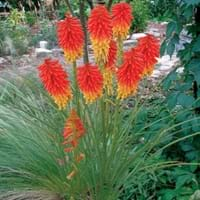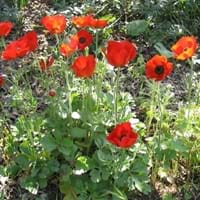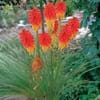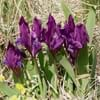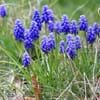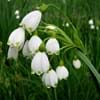Life Span
Perennial
Perennial
Type
Perennial
Bulb or Corm or Tuber
Origin
Hybrid origin
Eastern Europe, Northern Africa, Western Asia
Types
Not Available
tecolate strain
Number of Varieties
Not Available
Habitat
Damp Places, Marshy ground
Lawn, Temperate Regions
USDA Hardiness Zone
6-9
7-11
Sunset Zone
2a, 2b, 3a, 3b, 4, 5, 6, 7, 8, 9, 14, 15, 16, 17, 18, 19, 20, 21, 22, 23, 24
21,22
Habit
Clump-Forming
Upright/Erect
Flower Color
Yellow, Red, Orange, Pink
White, Yellow, Red, Purple, Orange, Pink
Flower Color Modifier
Bicolor
Bicolor
Fruit Color
Not Available
Not Available
Leaf Color in Spring
Green, Blue Green
Blue Green
Leaf Color in Summer
Green, Blue Green
Light Green
Leaf Color in Fall
Blue Green, Gray Green, Light Yellow
Several shades of Green
Leaf Color in Winter
Light Green
Light Green
Leaf Shape
Linear
Palmate
Plant Season
Spring, Summer
Spring, Summer
Sunlight
Full Sun, Partial Sun
Full Sun
Type of Soil
Clay, Loam, Sand
Loam, Sand
The pH of Soil
Acidic, Neutral
Acidic, Neutral, Alkaline
Soil Drainage
Well drained
Well drained
Bloom Time
Early Summer, Summer
Late Spring, Early Summer
Tolerances
Drought
Drought
Where to Plant?
Container, Ground
Container, Ground, Pot
How to Plant?
Divison, Seedlings
From bulbs, Seedlings, Transplanting, Vegetative Reproduction
Plant Maintenance
Medium
Medium
Watering Requirements
Needs more water during establishment, Water Deeply, Water in morning to avoid prompting diseases, Water in the early morning hours
Keep the Soil well drained, Requires plenty of water during the growing season
In Summer
Lots of watering
Lots of watering
In Spring
Moderate
Moderate
In Winter
Average Water
Average Water
Soil pH
Acidic, Neutral
Acidic, Neutral, Alkaline
Soil Type
Clay, Loam, Sand
Loam, Sand
Soil Drainage Capacity
Well drained
Well drained
Sun Exposure
Full Sun, Partial Sun
Full Sun
Pruning
Cut or pinch the stems, Remove damaged leaves, Remove dead branches, Remove dead leaves
Remove damaged leaves, Remove dead branches, Remove dead leaves
Fertilizers
All-Purpose Liquid Fertilizer, Apply N-P-K
All-Purpose Liquid Fertilizer
Pests and Diseases
Onion thrips, Red blotch, Root rot
Not Available
Plant Tolerance
Drought, Moisture
Drought
Flower Petal Number
Single
Single, Double, Semi-Double
Foliage Texture
Coarse
Medium
Foliage Sheen
Matte
Matte
Attracts
Snails
Insects, pollinators
Allergy
Not Available
Skin irritation
Aesthetic Uses
Borders, Cottage Garden, Ground Cover
along a porch, deck or patio, Bouquets, Cut Flowers, Hanging Basket
Beauty Benefits
Not Available
Not Available
Environmental Uses
Air purification
Air purification
Medicinal Uses
Not Available
Not Available
Part of Plant Used
Not Available
Flowers
Other Uses
Not Available
Basketary, deer resistant, Used as Ornamental plant
Used As Indoor Plant
No
No
Used As Outdoor Plant
Yes
Yes
Garden Design
Container, Cutflower, Mixed Border, Rock Garden, Wall
Bedding Plant, Container, Cutflower, Mixed Border
Botanical Name
KNIPHOFIA 'Border Ballet'
RANUNCULUS asiaticus
Common Name
Tritoma, Wisley Blue Spring Starflower, Wisley Blue Springstar
Garden Ranunculus, Persian Buttercup
In Hindi
Tritoma
Persian Buttercup
In German
Tritoma
Asiatischer Hahnenfuß
In French
Tritoma
Renoncule des fleuristes
In Spanish
tritoma
Persian Buttercup
In Greek
tritoma
Persian Buttercup
In Portuguese
Tritoma
ranúnculo
In Polish
Tritoma
Jaskier azjatycki
In Latin
Trytoma
Persian Buttercup
Phylum
Tracheophyta
Vascular plant
Class
Magnoliopsida
Not Available
Order
Asparagales
Ranunculales
Family
Liliaceae
Ranunculaceae
Genus
Kniphofia
Ranunculus
Clade
Angiosperms, Monocots
Angiosperms, Eudicots
Tribe
Not Available
Ranunculeae
Subfamily
Not Available
Unknown
Season and Care of Tritoma and Persian Buttercup
Season and care of Tritoma and Persian Buttercup is important to know. While considering everything about Tritoma and Persian Buttercup Care, growing season is an essential factor. Tritoma season is Spring and Summer and Persian Buttercup season is Spring and Summer. The type of soil for Tritoma is Clay, Loam, Sand and for Persian Buttercup is Loam, Sand while the PH of soil for Tritoma is Acidic, Neutral and for Persian Buttercup is Acidic, Neutral, Alkaline.
Tritoma and Persian Buttercup Physical Information
Tritoma and Persian Buttercup physical information is very important for comparison. Tritoma height is 45.70 cm and width 50.80 cm whereas Persian Buttercup height is 25.40 cm and width 10.20 cm. The color specification of Tritoma and Persian Buttercup are as follows:
Tritoma flower color: Yellow, Red, Orange and Pink
Tritoma leaf color: Green and Blue Green
Persian Buttercup flower color: White, Yellow, Red, Purple, Orange and Pink
- Persian Buttercup leaf color: Blue Green
Care of Tritoma and Persian Buttercup
Care of Tritoma and Persian Buttercup include pruning, fertilizers, watering etc. Tritoma pruning is done Cut or pinch the stems, Remove damaged leaves, Remove dead branches and Remove dead leaves and Persian Buttercup pruning is done Remove damaged leaves, Remove dead branches and Remove dead leaves. In summer Tritoma needs Lots of watering and in winter, it needs Average Water. Whereas, in summer Persian Buttercup needs Lots of watering and in winter, it needs Average Water.
